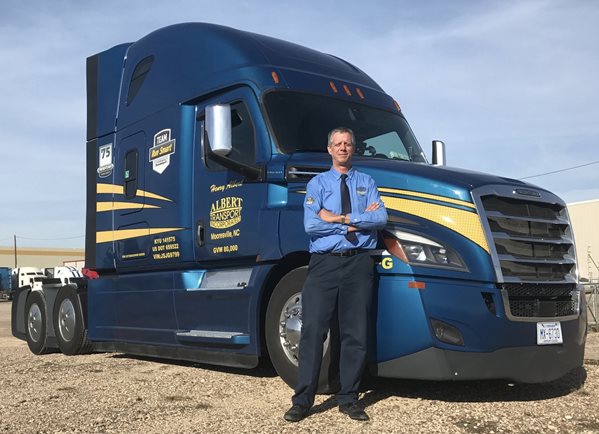
Back in 1996 I had started my career as an independent owner operator after many years as a company driver for two private carriers. With my experience in the transportation industry being derived from driving for private carriers left me ill prepared for some of the challenges to becoming on independent owner operator. In looking back, I am glad that my career in this industry had its birth in the private sector.
I am glad that I spent two years planning the start of this venture as I took this time to study the regulations, monetary issues, and basic business practices. However, there were two areas where I was miserable ill prepared to deal with.
- The large percentage of freight being controlled by brokers and large carriers. My business plan had been based upon having my own customers just as the private carriers had. I had zero experience dealing with brokers. The fortunate part of this scenario is that I already had one direct customer in my portfolio before I purchased a truck. My business plan was to concentrate on two cities that were spaced within one days driving time of each other. The objective was to develop relationships and bounce back and forth between these two locations. I had no idea how hard it would be to secure my own direct customers to fill out one half of my route. This is when I got introduced to brokers, what an eye opener that was. I found some good ones, I found some I wish I had never heard of, but in the end, I wanted to deal with the customer direct. Persevering I steadily acquired direct customers and for the most part only used brokerages on rare occasions when I needed to fill in a gap.
- The second area that required a major learning curve is that freight rates were based on market conditions more than actual operating cost. This is a particular hard area to get your arms wrapped around for many in the industry. Some areas due to supply and demand may support a rate which puts rates to levels high enough to make profitability extremely high, in this case you could have a rate that was four dollars a mile and still be on the low side based upon market conditions. The more difficult to get your mind wrapped around was when market conditions were not in your favor and you would scoff at $1.20-mile freight till you found out the market only supported $1.00 a mile on average due to market conditions. This area of understanding market conditions was a major learning curve to make sure that I was profitable at the end of the day, week, month, quarter, and year. I worked hard at understanding how to put all of these pieces of the puzzle together and have managed to have every year of my operation of Albert Transport to be a profitable endeavor.
Fortunately, along the way I had many good mentors in which I gleamed great advice from in order to make all of this a success. I will leave you with two of the greatest pieces of advice that I received early on.
- The first question I had asked was “How do you determine your freight rates?” the person I asked this question to had over eighty trucks at this time. The first thing you have to understand is that freight rates are not based upon operating costs. There I stood looking at him holding a handful of papers with all of my projected operating costs figured out in great detail. I am thinking to myself I put a lot of work into this. This is when he said it is very important for you to know your bottom line. That is when he said to me it is just as important to know the market conditions of your area of operation followed by knowing the needs of your customers to be able to achieve a profitable rate of compensation.
- The second piece of advice was not derived from me asking a question but from someone who was not in the trucking industry who said to me upon discussion of my endeavor, “Why in the world is anyone going to use you to haul their freight versus a carrier that is already serving them? I looked at him and hesitated for a second, then uttered that I was going to be professional and reliable and at that time he said, “Who cares?” I looked back at him and said what do you mean who cares which is when he said to me that is necessary but what is going to set you apart from your competition. As I stood there thinking about this he said I do not want to know your answer now as it needs to be on the tip of your tongue and your own. This turned out to be one of the more important weeks of my life from a business perspective as I pondered the question. I came up with my own ideas which were uniquely designed to set myself apart from my competitors. Upon sharing this with him he said, very good now you have something to work with.
In the end these two areas helped me tremendously in being a profitable carrier which was able to support my lifestyle every year of its existence since 1996.